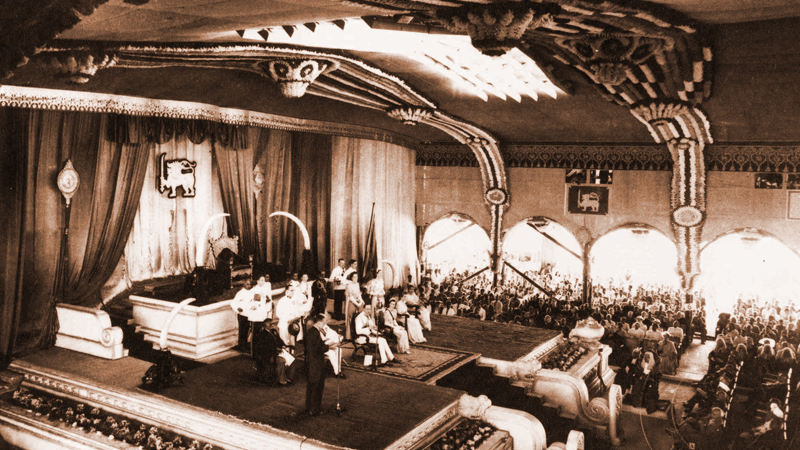
Sri Lanka and its people ponder their 76th anniversary of Independence that falls today with mixed feelings, the tumultuous political events of 2022 still fresh in their minds and, at the same time, considering their options at the presidential elections that must be held by October this year.
The public uprising in mid-2022 that brought forth the resignation of then President Gotabaya Rajapaksa also led to a clamour to review the Executive Presidential system of government in the country, a slogan heard on political platforms from time to time, especially during elections.
It is noteworthy that four of Sri Lanka’s Executive Presidents – Chandrika Kumaratunga, Mahinda Rajapaksa, Maithripala Sirisena and Ranil Wickremesinghe- have at one time or the other promised to abolish the executive presidential system but haven’t been able to accomplish that task when in office.
It is therefore worthwhile examining at this juncture, on an anniversary of gaining independence from Britain, the Constitutions that governed the country, their pros and cons, and how they seem to have shaped the political events of the nation, for better or for worse, in the past seven and a half decades.
At the time of gaining independence from Britain, Sri Lanka, then Ceylon, was governed by the Soulbury Constitution, enacted in 1947. This allowed for the grant of independence but retained its dominion status where Britain’s sovereign remained as the country’s Head of State.
The British sovereign’s representative was the Governor General. The Soulbury Constitution enabled a parliamentary form of Government and for a Judicial Service Commission and a Public Service Commission. Parliament had 101 members of which six were nominated by the Governor General.
This Constitution also allowed for an Upper House, the Senate. It consisted of thirty members, fifteen elected by Parliament and another fifteen nominated by the Governor-General. Elections to the Lower House, Parliament, were on an electorate based first-past-the-post Westminster model.
The first ‘national’ elections under the Soulbury Constitution were held in 1947. These were followed by elections at varied intervals until 1970 when Sirima Bandaranaike campaigned for the country to become a Republic. Her Sri Lanka Freedom Party (SLFP)-led United Front won a clear mandate.
1972 Republican Constitution
Lanka Samasamaja Party (LSSP) stalwart Colvin R. de Silva is credited with being the driving force for the 1972 Republican Constitution. The Parliament, elected at the 1970 elections convened as a Constituent Assembly on May 22, 1972 at the Navarangahala in Colombo to adopt this Constitution.
It severed all ties of governance with Britain. The country was renamed ‘The Republic of Sri Lanka’. The National State Assembly replaced Parliament. The Senate was abolished. The Governor General was replaced by a ceremonial President. William Gopallawa transitioned from one role to the other.
The Sirimavo Bandaranaike government which enacted the Republican Constitution used this as a reason to extend its term of office, claiming a tenure of five years from the date the new Constitution was adopted. This led to protests by the then opposition led by the United National Party (UNP).
Executive Presidency
At the general elections, held in July 1977, UNP leader J.R. Jayewardene campaigned for a drastic constitutional change and an executive presidential system of government. Jayewardene and his UNP was handed a massive mandate by the people. Thus, the Republican Constitution was short-lived.
Soon after assuming office, in October 1977, Jayewardene’s government passed an amendment to the 1972 Republican Constitution, converting the presidency an executive post. Under its provisions, Jayewardene automatically became the first Executive President of Sri Lanka on 4 February 1978.
It took a further seven months for the 1978 Constitution, with a fully-fledged executive presidential system of government and radical changes to the system of elections, to be drafted and enacted. Armed with a five-sixths majority in Parliament, Jayewardene had no difficulty in having it endorsed.
The new Constitution, promulgated on September 7, 1978, abolished the National State Assembly, reverting to Parliament led by a Prime Minister in a mostly ceremonial role and an Executive President. The term of office of the President and the duration of Parliament were both six years. The new Constitution also introduced a form of district-based Proportional Representation (PR) which replaced the first-past-the-post Westminster system for elections to Parliament, which consisted of 196 members, subsequently increased to 225 by the Fourteenth Amendment to the Constitution.
Independent judiciary
The 1978 Constitution, for the first time provided for an independent judiciary and guaranteed fundamental rights, providing for an aggrieved person to invoke the Supreme Court for any violation of such rights. It also made provision for the conduct of a referendum to resolve national issues.
This Constitution has also been subject to extensive revision, with 21 amendments to date. The most notable initial amendments have been the 6th Amendment (banning the advocacy of separatism) and the 13th Amendment (for the creation of Provincial Councils and allowing the merger of provinces).
Apart from these, having independent commissions to curb the President’s powers has long been a contentious issue. They were introduced in the 17th Amendment in 2001 but replaced in 2010 by the 18th Amendment which restored most of those powers. This was annulled by the 19th Amendment in 2015.
More changes followed with the 20th Amendment repealing the 19th Amendment in 2020, only to be replaced by the 21st Amendment in October 2022. This was after Ranil Wickremesinghe assumed office as President to serve the remainder of the term of Gotabaya Rajapaksa who had resigned.
Significantly, the President’s term of office was reduced from six years to five years in the 19th Amendment and his powers to dissolve Parliament were also curtailed to until after four and a half years from its first sitting. This was changed to two and a half years in the 20th and 21st Amendments.
These changes show that governments were inconsistent regarding the powers vested with the President. The greater powers Gotabaya Rajapaksa enjoyed through the 20th Amendment also meant that when the country’s economy crumbled, he was blamed.






